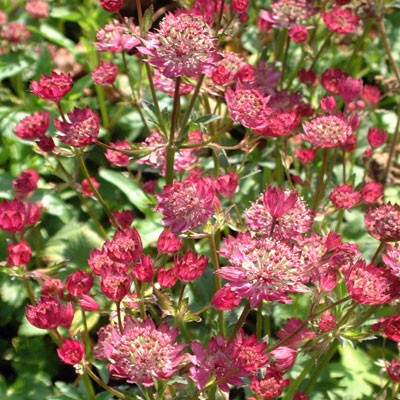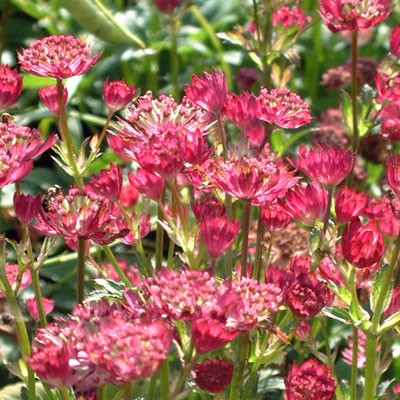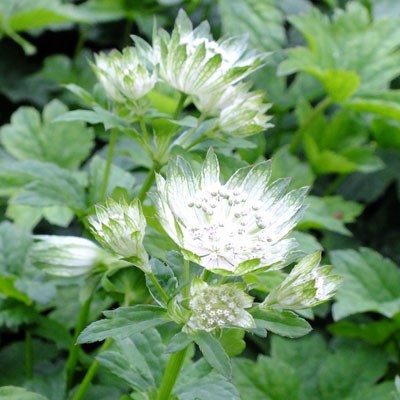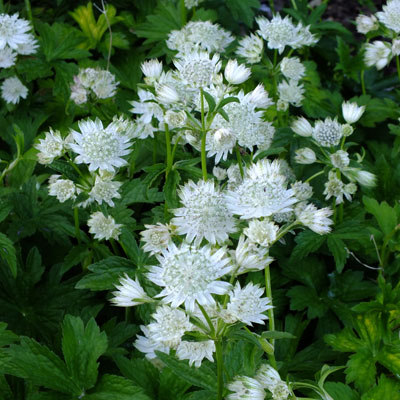‘Astrantias have a quaint beauty of their own’ – William Robinson.
Masterwort, Mountain Sanicle
Astrantia is one of two Genera, (along with Eryngium), that you may be surprised to find classified in the Umbelliferae (Apiaceae), along with carrots, fennel and cow parsley. However if you realise that each flower is in fact a flower head and then explode that out, the similarities soon become clear. They produce flowers over a very extended season, from Spring into Summer and dry very well.
Astrantia are natives of alpine meadows and light woodland and prefer a moisture retentive soil. Having said that, they are the most obliging of plants and will grow in a wide variety of sites. They tolerate sun to shade, moist to fairly dry. In a light woodland situation they will seed moderately freely, producing a drift of plants in a delightful range of flower shades. The wild plant is not common and not native to Britain, but has naturalised in one or two grassy areas. They produce dense spreading crowns and make excellent ground cover.
Most plants encountered will be forms of Astrantia major. However, we also offer the lovely and more spreading Astrantia maxima. It has larger heads of sugary pink with flatter, broader bracts. Hybrids are rare, but Nori and Sandra Pope crossed A. major and A. maxima at Hadspen Garden in Somerset to produce the lovely A. ‘Hadspen Blood’.
Naming
There may be two (or three) derivations for the name Astrantia, either from the Latin ‘Aster’ – a star, in allusion to the starry flowers, or from the Greek ‘astron’ – a star, and ‘anti’ – like, or alternatively as a corruption of ‘Magisterantia’ – masterwort, a name given to it believing it to be bit of a cure-all.
Masterwort can also refer to the plant Imperatoria ostruthium




















































